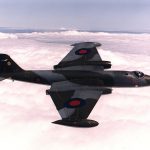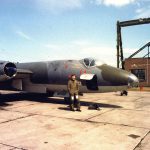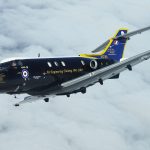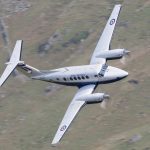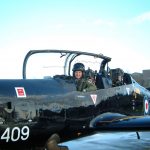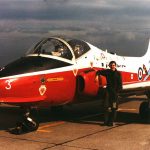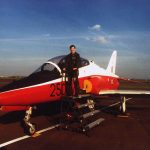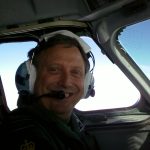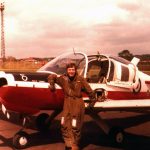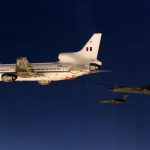CAP 694 gives full details of how to file a flight plan. However, here are the details relevant to the Seneca V:
Item 7 : Aircraft Identification
- Enter OXF (the ICAO designator for CAE-OAA) followed by the instructor’s callsign number, eg “OXF99″.
- Check flights (like PT6) conducted by an OAA instructor should be suffixed with a “T“, eg “OXF99T”.
- Exam flights with a CAA examiner should be entered using their callsign, eg “EXM99″.
Item 8 : Flight Rules and Type of Flight
- Since the aircraft will normally be operated under IFR flight rules, “I” should be entered.
- As a training flight, the type of flight should be “X” since it does not fall into any of the defined categories.
Item 9 : Number, Aircraft Type and Wake Turbulence Category
- The number should be left blank as this only applies to formations of aircraft.
- The Seneca V is “PA34“.
- The Seneca V falls into the light category (MTOW 7000kg and below), so enter “L“.
Item 10 : Equipment
- The Seneca V radio, navigation and approach aid equipment must be specified as “SDFGRYB“:
- “S” – Standard equipment (VHF, RTF, VOR and ILS)
- “D” – DME
- “F” – ADF
- “G” – GNSS (the type of external augmentation must be specified in Item 18 after “NAV/”)
- “R” – Performance Based Navigation (the level of PBN must be specified in Item 18 after “PBN/”). See the ICAO Guidance.
- “Y” – VHF radios with 8.33kHz spacing
- “B” – LPV(APV) with SBAS
- After the “/“, the Seneca V surveillance equipment must be specified as “LB2“:
- “L” – Transponder Mode S including aircraft identification, pressure altitude, ADB-B and enhanced surveillance capability
- “B2” – ADS-B with dedicated 1090 MHz “in and out” capability
Item 13 : Departure Aerodrome and Time
- Enter the four letter ICAO code for the point of departure, eg “EGTK“.
- Enter the Estimated Off Blocks Time (EOBT) in UTC. This is standardised at OAA to be 15 minutes before the take-off time assigned by ATC.
Item 15 : Cruising Speed, Level and Route
- Enter the TAS for the first or whole cruising portion of the flight, eg “N0150” for 150kt.
- Enter the cruising level/altitude for the first or whole cruising portion of the route, eg “F080” for flight level 80 or “A045” for altitude 4500ft.
- Enter the appropriate route. Where an ATS route exists between two waypoints its identifier should be entered, eg “SAPCO N57 TNT“. Where no ATS route exists between two waypoints enter direct , eg “BADIM DCT ICCIN“.
Item 16 : Destination, Estimated Elapsed Time and Alternates
- Enter the four letter ICAO code for the aerodrome where the first approach is to be flown. For a flight to Bristol for an ILS, then transit back to Oxford for an NDB to land, enter Bristol “EGDG” as the destination and “EGTK” as an alternate.
- If required, enter a Second Alternate to which you may wish to divert from Oxford if necessary.
- Enter the total elapsed time from take-off to arrival at your destination – in this case EGDG, eg “0035“.
Item 18 : Other Information
- Enter the first point in controlled airspace and the estimated elapsed time to get there. For example, if it takes 25 minutes to get to BADIM, enter “EET/BADIM0025“.
- Enter “REG/GOXFA” to identify the aircraft registration.
- Enter “OPR/CAE OXFORD” to identify the operator .
- To specify that a Satellite Based Augmentation System is available, enter “NAV/SBAS” – see Item 10.
- Enter “PBN/A1D2S1” to specify that the approved level of Performance Based Navigation system available:
- “D2” – RNAV 1 using GNSS.
- “S1” – RNP Approach.
- To inform ATC of your training requirements, add a “RMK/”, eg “RMK/VECTORS TO ILS FOR LOW APPROACH THEN DIVERT TO EGBJ AT 5000FT“.
- Enter “RVR/800” to indicate that the minimum RVR requirement for the flight is 800 metres for single-pilot operations.
Item 19 : Supplementary Information (not transmitted to ATC)
- Endurance: Enter the aircraft endurance in four figures, eg “0345” for 3 hrs 45 mins – 90 gals at 24 gals/hour burn.
- POB: Enter the number of persons on board, eg “003” for 3 people.
- Emergency Radio: As no portable emergency radios are usually carried, cross through “U” and “V“, but leave E as the Seneca V is equipped with an Emergency Location Transmitter.
- Survival Equipment: As no survival equipment is usually carried, cross through “S“.
- Jackets: As no life jackets are usually carried, cross through “J“.
- Dinghies : As no dinghies are usually carried, cross through “D and C“.
- Aircraft Colour and Markings: Enter “WHITE AND BLUE“.
- Remarks: Although not a standard use of this entry, use this to inform Oxford ATC of your planned type and time of recovery.
- For an IFR recovery to join the hold, enter “ETA/OX 1200“.
- For a VFR recovery, enter “ETA/EGTK 1200“
- Pilot: Enter the PIC’s (instructor or examiner) surname.
Finally, you may validate your draft flight plan using a live feed with the Eurocontrol Network Operations Portal. Follow this link to the Eurocontrol Structured Editor portal, then locate the “Flight Planning” section towards the bottom of the right hand column. Click “Structured Editor” and enter your details for Items 7 to 18. Finally, click “Validate” at the top left of the window and the results will appear at the bottom of the window. Good luck.

